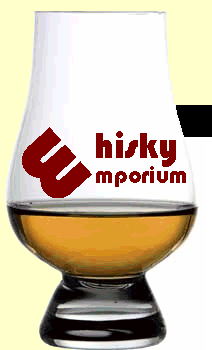|
Home
|
Whisky & Chocolate |
Collecting Whisky |
Dram-atics | Tasting
Notes | Contact &
Impressum | Wall of Friends
|
|
Dram-atics
The whisky world as seen by an eccentric Bavarian exile |
|
|
Please
contact
me here to comment on any Dram-atics article, I'll include as
many replies as possible
|
|
 |
|
Tuesday July
27th
Those funny
little thumb-nails, or "Time
to get a little personal this month"
Dram-atics, as you know, is the page where I publish live
whisky reviews, offer my opinions on what is happening
around the world of whisky and generally just pontificate on
the subjects surrounding my passion, which indeed it is. But
July has been a little different as I have allowed one
single theme to run throughout the month; "Age".
|
|
| |
As you see from my post below (from July
21st), I received a press release about the Chivas Brothers "Age
Matters" campaign and decided to use July's Dram-atics to focus
on this subject by reviewing whiskies of all age ranges. Well
most ranges as I can't afford those older beauties to match my
own vintage. Speaking of which, this whole topic also fit nicely
with the fact that July holds my own birthday and yes, that
chocolate cake was truly excellent.
But why
these funny little thumb-nail pictures in particular?
Since I started Dram-atics in November last
year I have used some kind of thumb-nail picture to introduce
each article, often a cartoon, sometimes one of my own photos,
but always alluding to the subtitle I give each article, albeit
often cryptic with a little added poetic licence.
Back in May I had to return to the UK for the
funeral of my Step-Father who had reached the grand age of 93
before passing away peacefully in his sleep. Obviously, this was
also an opportunity to visit my Mum whose health is failing as
she suffers from Alzheimer's and has now also been diagnosed
with a form of blood cancer, although at her age this isn't
advancing so rapidly. As you can imagine, it was a sad and
emotional visit but one treasure that came out of my trip was to
be given some photo albums covering my own childhood and also
from Mum and Dad before I was born. I knew of their existence,
but feared them long-lost as I hadn't seen them for years and
when my Step-Brother helped move Mum into the home, he couldn't
find them either, but thanks to a very honest workman who was
called in to do some repairs on their little bungalow and found
a couple of boxes of items hidden away, I have now been reunited
with the early family albums and also a few other sentimental
items that have little monetary value, but are extremely
precious and invaluable to me.
I could think of no better way to celebrate
my Birth-month than by using some of those long-forgotten
pictures of my own childhood for a series of articles focused on
"Age" and, if you use enough poetic licence you may just see my
intentions behind the placing of each one, so I thank all my
readers for putting up with me getting a little personal during
this last month and I promise it will be back to 'normal' in
August when I plan to celebrate a certain momentous milestone! |
|
|

Chivas
Bro's video |
|
Wednesday July
21st
Age matters, or
"How old is it really?"
At
the end of June, along with selected other whisky
commentators and bloggers, I received a press release about
Chivas Brothers' newest campaign "The Age Matters"
about which they say "The
aim of the campaign is to enable consumers to understand
fully the age statement and to appreciate the value of the
premium product they are purchasing"
|
|
| |
Chivas
Brothers commissioned a study into what the public perceive
about age statements on whisky and the findings are just a
little surprising;
"94% of consumers believe the age statement serves as an
indicator of quality, 93% believe that older whiskies are better
quality and 89% actively look for an age statement when making a
decision to purchase." Fair enough so far, but then we
find; "only 10% understand that it refers to the youngest
whisky in the bottle, nearly half (48%) believe an age statement
refers to the average age and 35% believe it signifies the
oldest whisky present." So it seems that according to
this survey only 10% of consumers actually know what they are
buying as an age statement must, by law, define the number of
full years the spirit spent maturing in oak casks before
being bottled. Speaking of which, if you'd have bought a bottle
of 12 year old whisky ten years ago and not opened the bottle,
it is still 12y whisky today, not 22 years old. The 'age' as I
said refers to the
maturation in oak casks as, unlike wine,
whisky does not mature further once bottled.
In fact, I have
already written briefly about this in my
"New to Whisky" guide for newbies.
According to the study it does seem that most of us see an
age statement on the bottle as an indicator of quality and also
that older means better, but is this strictly true? Well, it is
true that 100% of the colour of the whisky (so long as the
caramel E150 additive isn't used) comes directly from the cask
during maturation. The cask is also one of the greatest
influences on the flavour of the whisky as the wood itself,
along with the previous contents of casks all play a vital role
during maturation.
But is
older really always better?
This is
a difficult question and there is no single answer covering all
whisky as many other factors, especially climate, also play a
part. Earlier this year I reviewed
a series of four samples from Maker's Mark
which included their 'white Dog' (less than 1 day old), 1 year
old, the standard NAS (about 6y) and what they call 'Overaged'
9y whisky. Even at 1 year of age the spirit was showing elements
of maturity. Likewise, last month I reviewed some expressions of
South African whisky which were extremely mature at an age of 5
years. But when we talk about South Africa and Kentucky, we are
talking of pretty hot climates and whisky maturation is proven
to be much more advanced or 'quicker' in those
climes.
If we
stick with Scotland, then I have to say that in general whisky
does improve with age, although different distilleries do tend
to have certain profiles of whisky that they bottle at specific
ages. What do I mean here? Well look at my review of three
Laphroaig expressions further down this page from
6th July. If you like your Laphroaig to be that typical 'in your
face' peat, seaweed, iodine and general Atlantic jetty on a
stormy day, then the 10-12y age range is ideal for you. From
around 15-20 it's getting more rounded and mellow as further
maturation smoothes out the peat and lessens those 'Atlantic'
elements. Maturing further (20+ years) makes for an even rounder
whisky, so at this stage, it's more
a matter of personal taste.
Looking
a little closer to the home of this campaign and The Glenlivet
whisky, we see that the range begins with a 12y expression which
is a very good, slightly fruity whisky. The 18y is again much
smoother with highly pronounced summer fruit flavours like
apricot. In between lies the 16y Nadurra which is a truly
excellent whisky.
But I
guess this campaign isn't really about whether 20y whiskies are
better than 12y or 18y ones. It's about letting the public know
and also helping them to understand exactly what is in the
bottle. It's also true that as distilleries fight to meet the
increased demand of todays expanding global market, the
temptation is to bottle younger whiskies or at least combine
younger ones in their bottlings and, if they choose to state the
age, remember it must be the age of the youngest whisky in the
bottling, so they often choose to bottle as No
Age
Statement
or under trendy names rather than ages. So a big "thank you" to
Chivas Brothers for taking this stance and working to inform the
general public! |
|
|
 |
|
Sunday July
18th
Some rarer vintages, or
"Old-timers can teach the youngsters a thing or two"
I
expect today's article to more or less conclude my own
series on 'Age' which has run throughout July as in the next
couple of days I will look at other peoples' comments on the
subject which will include the current marketing campaign
from Chivas Brothers. Meanwhile, I end my series with a
review of four older expressions, two of which are from a
brand I've been hunting for some time now.
|
|
| |
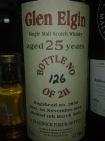
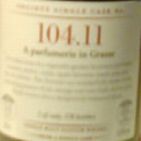

Cambus 24y, 1986-2010, 54.7% abv Bladnoch Forum bottling; My
first dram of the evening is not a single malt, but a single
grain from the now defunct Cambus distillery which was founded
in 1806 by John Mowbray when he took over a derelict mill next
to the river Devron. He registered his business in 1813 but
didn't start distilling whisky until 1823 when he acquired the
title to that piece of land. Unfortunately, the distillery was
closed down by the last owners (UDV) in 1993. As I like light,
smooth and quite floral drams I tend to be partial to a good
single grain, especially the older ones which often exhibit
these characteristics and this Cambus 24y is no exception.
Thanks to the 54% there is a little alcohol tingle on the nose,
but this is soon replaced by a wonderful bouquet of light
butterscotch, honey and just a suggestion of a lemon grove
basking in the midday sun. The palate is deliciously smooth with
the aromas from the nose translating nicely onto the tongue
which intensify even further with the addition of a few drops of
water.
My
second dram of the evening is another Bladnoch Forum bottling,
this time a Glen Elgin 25y, 42.3% abv; I expected much from
this whisky and was quite surprised to find it initially faint
and very mellow, but its presence grew on the palate into a
pleasant mixture of citrus and toffee apple. The nose offered
intense vanilla, light cheese and even a touch of ginger. After
a slow start the finish was very long with apple and hints of
liquorice. A very good but delicate whisky.
As you
can see from my main Tasting Note Page I am trying to review
whiskies from all the current Scottish distilleries, plus some
extra 'brands' where a distillery offers more than one product
label. Before tonight my search or 'project' was missing only 17
of these and now, in one evening I managed to source not only
Cambus, but also Glencraig; the whisky produced at Glenburgie
distillery for only twenty five years between 1956 and 1981 in
Lomond stills. In fact, I have the pleasure of trying two
different old Glencraigs, one at 34 years and a second at 35y.
Glencraig SMWS 104.11 34y, 47.8% abv: After an initial burst
of aromatic aged wood and treacle toffee, the nose suddenly
transported me back in time to just over 40 years ago, to the
days when my local sweet shop sold a fizzy drink, or 'pop' with
a flavour of "dandelion and burdock". Oh goodness, to find this
semi-herbal, semi-floral delight in a whisky after more than 40
years is a rare delight! The palate then offers aromatic
liquorice and treacle toffee with an extremely long finish,
extended further with a few drops of water.
Glencraig, Duncan Taylor "Rarest of the Rare" 1974-2009, 35y,
cask 2922, 42.4% abv: The first nosing of this Glencraig
transports me immediately to the Scottish outdoors. Old aromatic
wood, perhaps a Crofter's cabin seated amongst the bracken and
heather of a nearby hillside. Light toffee, malt and leather
caress the palate into a long finish, but adding water shortens
the finish, don't be tempted!
All in
all an evening of excellent whiskies which happen to be the
oldest and also the most enjoyable of the many excellent ones I
have tried this month. Does 'Age' matter? You bet it does, but
more of that in a day or so! |
|
|
 |
|
Saturday July
17th
Dramming with
Cioccolato
Domori, or "Italian style, par
excellence!"
I
tend to be outspoken when it comes to chocolate these days,
especially when it comes to high quality thanks to Frau
Franz, proprietoress of the incredible local
chocolateria bearing her name.
Today I wanted some small samples to experiment alongside
whisky this evening and my wife promised to collect them
whilst shopping. It was a rather hot day and Frau Franz
insisted on personally delivering them after closing her
shop, rather than risk them melting in the midday heat.
Now that's what I call service!
|
|
| |
When
insisting upon delivering the chocolate, Frau Franz referred to
my choice of Domori as the finest chocolate she knows. It costs
a bit too as I paid almost €9 for nine bars. "That's pretty
cheap and normal" I hear you scream, but alas, 'normal' bars
tend to weigh 100g, whereas these nine each weigh just under 5g
so I reckon that's about 20x more expensive than a brand like
Sarotti or Lindt, but is it any good?
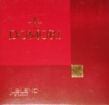
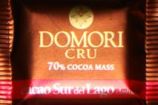
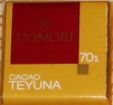
Domori "Il Blend" 70% cacao. Light honey, caramel and a hint
of tobacco; My first partner to this chocolate is the
Arran Rowan Tree (Icons of Arran No. 2 from 2010) and
although the honey of Il Blend does indeed blend well with the
creamy elements of the Arran, the whisky tends to neutralise
most of the flavours of the chocolate. Secondly, I try Il Blend
with my Glen Mhor 1969 and find immediately that the
honey combines with the floral characteristics of the Glen Mhor
to enhance the palate and take it to another dimension, but then
the very slight tobacco flavour in the chocolate combines
wonderfully with the aged oak of the whisky to prolong the
finish making it even more luxurious. Finally I partner Il Blend
with the Dalmore Mackenzie which is the richest in
flavour of these three whiskies. The combination of dark fruit
in the whisky and honey, tobacco & caramel of the chocolate just
synergise on the palate to create an overall entity which is
creamy, luxurious and delightful on the palate.
Domori "Teyuna" 70% cacao. Bitter sweet, cashew nuts and a
touch of honey; My first thought here is that the
Arran Rowan Tree has been given a very slightly nutty
bitterness from the chocolate, but this isn't a bad thing, in
fact it's a dimension to the palate which I think is an
improvement. The finish is then long with elements of both the
whisky and the chocolate once again combining. Amazingly, the
combination of Teyuna with the Glen Mhor has a quite
opposite effect. The slightly bitter flavours from the aged wood
are totally lost on the palate which is now dominated by a
honey-induced creaminess with a luxurious mouth-feel. The light
cashew nuts finally merge with the aged wood to enhance the
finish. Finally, the cashew nuts of the Teyuna merge with the
dark fruits of the Dalmore Mackenzie to offer even more
'Christmas cake' feeling although the flavours in the Dalmore
are significantly stronger and dominate through the finish.
Domori Cru "Sur del Lago" 70% cacao. Dark, rich, bitter sweet,
seaside promenade; The sligthly bitter sea-front
flavours of the chocolate make a very good partner to the creamy,
sherry-influence of the Arran to rough it up a little and
actually paint a more complete overall picture, as if a missing
jigsaw piece was magically added. Also with the Glen Mhor,
it just seems to be a more complete picture. That dark, bitter
sea-front combines particularly well with the aged wood to give
a very rounded and 'complete' palate, allowing the more aromatic
and floral elements of the whisky to dominate the finish.
Finally, I am amazed that the slight bitterness of the Sur
del Lago actually enhances the dark fruit and sweetness of the
Dalmore Mackenzie to create an even more delightfully
rounded and fruity palate, although the flavours of the choclate
rather than the whisky dominate the finish.
|
|
|
 |
Friday July
16th
Chocolate cake by Franz, or
"Happy Birthday to me"
An
auspicious day for reasons I won't dwell upon now, but will
return to at the end of the month, although one highlight
was a surprise delivery which arrived early this morning
thanks to my wife and a certain chocolatier called
Franz.
|
|
|
 |
|
Wednesday July
14th
Chapters 2,4 & 9, another
trilogy of peat, or
"Feeling all grown up"
At the
beginning of this month you may remember I tried the three year
old "Chapter 9" peated release from St. George's distillery.
Following that review, Matthew an online whisky friend in
England sent me further samples in the form of Chapter 2 the
peated new make and Chapter 4 the 18 month peated spirit release,
along with a further sample of Chapter 9 so that I could compare
the development of the peated spirit through to its coming of
age to whisky. |
|
| |

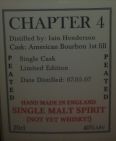
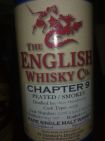
St.
George, Chapter 2, peated new make, 46%: New spirit is often
very aromatic, but it can also be quite rough or raw in
character. Not this one from St. George's, it has peat and light
rubber on the nose and herbs with floral overrtones on the
palate which are followed by the peat which leads nicely into
the finish. Overall it's a quite light spirit with a very clean
and gentle character.
St.
George, Chapter 4, 18 month old peated spirit, 40%: the
eighteen months have added a little colour to the spirit, but
really not very much. Alongside the peat, the nose has acquired
an aroma of lemon grove or even that of a lime tree basking in
the midday sun. Light citrus flavours also greet the palate
before the peat comes to the fore to take charge. The finish is
medium to long and again very gentle.
St.
George, Chapter 9, three year old peated whisky, 46%: On
this occasion the rubber is a little more intense on the nose
but it fades after 2-3 minutes to promote a mango and banana
skin fruitiness. On the palate this fruitiness is more
peach-like but again it soon gives way to the peat.
Conclusions and summary: St. George's whisky has often been
likened to a Scottish lowland malt and in some ways I agree as
it is light, gentle and quite floral and fruity in character,
but upon second thoughts, I would be tempted to say it is
forging ahead with its own character and style. The expressions
I have now tried are very light, smooth, gentle and caress the
palate, so well done to The English Whisky folk, this whisky
shows lots of promise and although it is indeed now beginning to
feel 'all grown up', I look forward to the future years of
maturation when it will hopefully blossom into a true beauty.
|
|
|
 |
|
Saturday
& Sunday July
10th
& 11th
A weekend quartet, or
"Four!!!"
Two 'NAS' (No Age Statements), a twelve year old and a Thirteen
will hopefully provide some valuable data to my examination of
age here on Dram-atics this month, especially as they are also
four rather different whiskies. |
|
| |

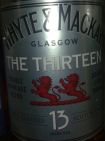

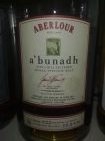
Bruichladdich Links "St. Andrews" from mini pack: I have
reviewed a few of Bruichladdich's Links series recently, but
they have all been the 70cl versions with stated ages ranging
from the earlier 14y to the current 16y bottlings. This one is
different, it's a 5cl bottle from one of the two current 'mini
packs' which in this case comprised 3D3, Rocks and this Links.
As I said this has no stated age and I expected it to be similar
to the young Rocks and Waves in having a young, fiery and
slightly rough style. How surprised I was to find a quite smooth
dram with a nose of Autumnal leaves and malt, followed by that
smooth, but faint and gentle palate of fruit, leather, freshly
sawn wood and a light leafyness, with a long fruity finish.
Whyte
& Mackay "The Thirteen": Here is a 13y blended whisky with a
rich floral nose comprising also of freshly polished antique oak
and marzipan. The smooth palate is equally rich and even reminds
me of a mixture of marzipan and icing on a traditional English
Christmas cake, just like my Gran used to make! The finish in
this case is long and increasingly floral towards the end.
Springbank 12y Cask Strength: I tend to have my doubts about
cask strength Springbanks thanks to the very first "100 Proof"
which was a special single cask edition for the Munich whisky
fair some years ago. To me that was just pure alcohol and far
too spirity. Not so for this 12y CS as the nose offers malt,
faint rubber, hay and only the lightest hint of spirity paint
stripper, which immediately vanished with just a few drops of
water. The palate was delightfully smooth and creamy with faint
rubber which quickly turned into a cocktail of coconut and
vanilla. A couple of extra drops of water released even more
floral elements along with the vanilla, some wood and a slight
pepperiness. Thank you Springbank, you have finally laid to rest
my previous doubts about your CS offerings!
Aberlour A'Bunadh Batch 22: All A'Bunadhs are NAS but in
this case that isn't a bad thing as they are not particularly
young whiskies. In creating this series Aberlour are looking at
profile more than age, although I am told by a Chivas Brother's
employee that these batches are all 'around' the 16y age mark.
What we have here is a series, called batches, of cask strength,
sherry cask bottlings. I personally hold Batch No. 20 in high
regard as one of the three best batches, but this #22 really
isn't that far behind. The nose offers old oak, leather, dark
cherries and a hint of car polish on a sunny day. The palate is
equally rich, in fact very rich, with aromatic wood, sherry and
a very floral cheese. Think mountain cheese wrapped in a
Springtime Alpine meadow.
|
|
|
 |
|
Friday July
9th
A sign of getting old; "The
police seem to get younger every day!"
This particular Police bike may have been quite static on
a Merry-go-Round in Great Yarmouth and a few decades before a
certain "CHiPs" TV programme was imported to the UK from across
the Pond, but isn't it true that as we all get older, the
Policemen and women seem to be getting younger? |
|
| |
Well,
today's 'PC' is breaking that trend as it gains another year,
but then the 'PC' in this case isn't a Police Constable, but a
Port Charlotte from Bruichladdich. I remember with great
fondness just what a beast the PC5 was, then after missing PC6 I
found PC7 to have matured very nicely into sweet and smooth
passion fruit and peat, with a lingering smokiness. So what of
the latest recruit onto Bruichladdich's PC 'beat'?
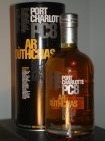
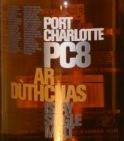
Bruichladdich PC8 Port Charlotte 8y, 60.5%; A nose of sweet
peat with gentle hints of rubber dinghy on the open sea is
pretty much translated into the palate, although with a little
sea and more of that passion fruit. The whisky turns into more
conventional peat with the addition of a few drops of water, but
at the same time it acquires a more creamy texture, rather like
peat-flavoured ice cream. Now there's a business opportunity;
Islay Ice! A few more drops of water make it even smoother and
again enhance the peat, but further drops just take it too far
and although it's mellow, it's just a drop too much.
|
|
|
 |
|
Wednesday July 7th
A journey into the unknown, or "What
are those then?"
Today's
feature is something of a journey into the unknown as one of my
online whisky friends has decided to send me a quartet of
samples but has declined to give me any information about them,
other than to say they are all malts and typical of their
origins, or their distillery siblings. In fact he has challenged
me to give as much information about them as I can and even
asked me to try and guess which distilleries they may be from. |
|
| |
Errrrmm
thanks Steffen, remind me to return the favour one day!


I have
decided to pour these alongside each other rather than
singularly so I can take my time and even make a few comparisons.
Sample No. 1 has arrived in a Tullibardine bottle so I can
assume it is not from there. Likewise sample No. 2 which sits
innocently in an Ardbeg bottle and No. 3 in a Grant's bottle,
although No.3 is by far the darkest and I can honestly say I
never saw so rich a Grant's expression. No. 4 has no markings
other than a "No. 4" label.
|
|
|
 |
|
Sample No. 1
Glass: Spiegelau
Colour: 18 carat gold
|
|
| |
Nose: Initially earthy, but not quite farmyard.
Slightly aromatic straw, bordering on aromatically bitter,
although the background comprises something almost sweet.
Palate: Smooth and warming, more sweet than the nose
with a little hint of coconut.
With 3 drops of water: Slightly more farmyard on both
nose and palate
Finish: Medium |
|
|
 |
|
Sample No. 2
Glass: Classic Malt
Colour: Amber
|
|
| |
Nose: Richly polished old oak, fruity (raisins &
bramble) wood and leather. Is that a hint of toasted
lavendar too?
Palate: Smooth and creamy but again over 50% abv.
With 3 drops of water: More aromatic nose, sweeter
palate, but it has opened to include treacle toffee and
coconut. Perhaps even slight banana skin.
Finish: Very long, sweet and fruity, especially with
the water added. |
|
|
 |
|
Sample No. 3
Glass: Classic Malt
Colour: Dark and rich teak.
|
|
| |
Nose: Rich, very rich dark fruits, old wood, leather
and Pirelli P1.
Palate: Rich toasted wood and dark fruits. This is
extremely rich and once again I reckon over 50% abv. Very,
very intense.
With 3 drops of water: Extremely aromatic rich wood
on the nose, spicier palate with wood, rich marzipan and
more dark fruits.
Finish: Very long. |
|
|
 |
|
Sample No. 4
Glass: Spiegelau
Colour: Light gold
|
|
| |
Nose: Slightly peaty outdoors with countryside and
distant cows grazing near a peat bog, or by a peat fire.
Hints of wood.
Palate: Smooth and slightly peaty. It seems like high
abv too. Yes, a quick bottle shake tells me over 50% abv.
With 3 drops of water: A fresher slightly more
aromatic nose and a little more spicy peat.
Finish: Long, even longer with water. |
|
| |
I now have the impossible task of trying to identify and suggest
where these drams may be from. As I deliberate further I have
poured the last drops into my glasses in the blind hope that
some kind of divine intervention will strike like lightning and
burn four distillery names into my desk. Sadly there is no storm
in sight and it looks like I will just have to embarrass myself
to the world, but hell, who cares? let's get on with it:
Sample #1: I wondered if this could be a Tamnavulin, but as
my Tamnavulin 12y was a truly dreadful dram and much worse than
this one, I don't really believe that's the answer. I also
briefly considered Glendullan but this too was discounted. One
other possibility is something from the Loch Lomond stable,
perhaps Croftengea. A possibility, but I wouldn't finalise on
this decision. I am continually drawn to "The Speyside"
distillery with The Speyside label or even one of the other
brands like Glentromie, so I am finally undecided between this
and my final thought which is Tormore.
Sample #2: One of my first thoughts on this was Mortlach
and I haven't really discounted it. My second thought is
Aberlour, something like the 16y or 18y, or even Ben
Nevis. When it comes to sherry drams Glenfarclas always
comes to mind, but somehow I don't believe this is from there,
it's just not solid enough. The Floral aromas along with those
sherry cask traits make this one quite difficult to ascertain.
Sample #3: This is an unbelievably rich whisky, undoubtedly
a sherry cask and probably not only first fill, but also quite
old. My first thoughts tend towards Macallan, Glenfarclas and
Dalmore. I have tasted a few Macallan 18y expressions and to
be honest, this is even richer, so if it's a Macallan I would
hazard a guess at possibly older than 18y. It could also be one
of the older Dalmores, it certainly has the strength of
character. As for Glenfarclas, I believe this has much more
strength of character than the ones I have tried so far, but
again it could be an older one than those I have as yet tried.
My final thought which is something of a wild guess would be
one of the heavily sherried Japanese offerings, perhaps a single
sherry cask Yamazaki.
Sample #4: Oh dear, you really don't make things easy
Steffen. I find plenty of outdoors here, almost farmyard, but
with a distinct gentle peat influence. I don't really believe
this is an Islay, but I could be mistaken. It does remind me
slightly of Longrow and even almost of a Ledaig, although
it's not quite insipid enough to be compared to the Ledaigs I
have currently tried. Coming back to Islay, it could almost
be an Ardbeg, but if so, it's a rather strange one.
Steffen,
I thank you immensely for this opportunity to thoroughly
embarrass myself and I look forward to seeing just how wrong one
(OK, I) can be, but still, I promise not to cheat and change my
ideas after seeing what you say. Once you have read my musings
and replied in your own knowledgeable way, I will append your
answers here for all to see.
My
kindest regards, Keith
|
|
|
 |
|
Hi Keith
Blind guessing can be hard: |
|
| |
1.
Amrut Double Cask. Cask filled : 27/2-2003 and 25/7-2002.
Bottled 27/2-2010, cask #2874 and 2273- 46%, oldest expresion of
Amrut released so far- Ex-bourbon casks
2. Caperdonich 35y. Whisky Fair Bottling (Limburg),
distilled Nov. 1972, bottled August 2008, 48.3%. Refill Sherry
Hogshead. A Duncan Taylor Cask!
The last 2 are from the Danish importer (and also indy
bottler) Norse Cask that unfortunately went broke last year:
3. Rechlerich 1964 (it's a Glenfarclas), 40yo,
53.5%
4. Port Ellen 1979 28yo 53.6%
Here
are my opinions on them:
1- The Amrut. Clearly different than scottish whisky,
this is less tropical and more vanilla than other Amruts I tried
2-
Caperdonich, quite unusual to have a C'Donich with a sherry
cask background, it can't hide its origion though, but still not
like the normal C'Donich this age
3-
Extreme Sherry monster
4-
This isnt that atypical a Port Ellen in my opinion, maybe
thats too tricky
Your
guesses weren't too bad, you even mentioned Glenfarclas on No. 3
and the tasting notes looked quite sensible to me as well.
Steffen
Hi
Steffen, oh dear how did I miss that Port Ellen? I have sampled
quite a few Port Ellens and always liked them, especially that
gentle mixture of hay, straw, outdoors and light peat. You are
correct, this was quite typical of the normal character, I just
missed it. The lightness of the peat made me think of Longrow,
but again it would have been far from a typical one at that.
The third was indeed an obvious sherry monster and to be honest,
after the tasting I thought more about this one and discarded
Dalmore, the profile wasn't quite right. It also had to be quite
old and at 40y it equals the Dalmore as
the oldest whisky I have yet tried. The first two were difficult,
everything about that Amrut was just so similar to the character
of "The Speyside" distillery brands. I have tried just one Amrut
and to be fair, it was an early one and nothing like this, so
please forgive me. Finally, the Caperdonich was onbviously
sherry cask, without being a sherry monster and obviously quite
different from my previous Caperdonich experience so I never
even considered it.
Once
again many thanks for the opportunity to not only sample these
four, but to do it in such a fun way.
|
|
|
 |
|
Tuesday July 6th
A trilogy in three peats, or "The
hallowed torf"
For many
of us, when we think of peat, only one place immediately comes
to mind; Islay, the home of some of the most peated malt
whiskies available thanks to Islay's most famous resource; peat.
Tonight I'm concentrating on just one of the island's
distilleries; Laphroaig whose 10y mainstay product is synonymous
with not only the island, but also the Atlantic Ocean
surrounding it. The character of the 10y is not only one of peat,
but also iodine, seaweed and the sea-air itself. In fact I often
liken Laphroaig to being on an Islay jetty, breathing the
sea-air whilst standing alongside a traditional peat fire. |
|
| |
I once
attended a masterclass by a previous distillery manager from
Laphroaig who explained their research into the effects of
maturation on the character of the whisky. Basically, that
unique style comprising the sublime combination of peat, iodine,
seaweed and sea-air peaks around ten years. Any younger and the
rounded balance is just not there, but as the spirit matures
longer than ten years, it becomes more mellow with age, losing
the iodine and 'Atlantic' characteristics in favour of a more
mature peaty smoothness.
I hope
to test this theory (or actual distillery research) tonight with
three Laphroaigs of different ages, the first two of which are
Feis Ile special releases; The Cairdeas 12y from 2009 and the
Cairdeas 2010 which doesn't state an actual age, but does say "a
range of spirit from 11 to 19 years old". OK, so this is really
an 11y, but it will be interesting to look at whether the older
components have any discernible effect. Finally, to complete the
trilogy I have a special edition 20 year old from La Maison Du
Whisky which is a Douglas Laing "Old Malt Cask" bottling.


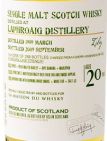
Laphroaig Cairdeas 12y, Feis Ile 2009 edition; The first
delight here is the wonderful nose which begins with a light
rubberiness but soon expands into gently smoked peat sitting out
on that Atlantic jetty as though being left out there to dry.
The palate also includes these lovely peat and Atlantic elements
but offers a surprise in the form of fruity berries too. The
addition of a few drops of water remove the fruit and return the
whisky to full-power peat, wood smoke and pure Atlantic air all
encased in a lovely smooth body.
Laphroaig Cairdeas, Feis Ile 2010 edition; The nose here is
gentle smoke, light peat, salt and a hint of new leather. The
palate is subtle with smoke, peat and even a hint of fruit, but
it comes to life with the addition of a few drops of water as
hints of treacle toffee and popcorn join the peat and then with
further drops of water, the pepper, peat, toffee and popcorn all
grow in stature. This is a quite different Laphroaig from the
standard profile as it has more complexity which grows further
upon the addition of water.
Laphroaig 20y, Old Malt Cask, La MdW edition; Toasted malt,
faint rubber, peat and an Atlantic fishing village greet the
nose in unison. The palate is rich and smooth with fruity
reminders of summer berries but also lightly enhanced with
mature peat. The addition of a few drops of water seem to
enhance the lightness of the fruit on the nose, but reduce it on
the palate as the stature of the peat grows.
The 12y
Cairdeas had everything I love about Laphroaig, from the peat
and smoke right through to the Atlantic jetty and sea-air, but
it also had a little extra surprise with the slight fruitiness.
The 2010 edition Cairdeas was definitely more complex with peat,
salt, leather, toffee and popcorn, but gone were those pure
Atlantic traits. Surprisingly, some of the Atlantic traits
returned in the 20y bottling, but only on the nose as the palate
was rich and smooth with delightfully mature peat joining light
fruit. I guess the Cairdeas 12y would be the dram of choice for
the traditionalist, but in reality, although very different, all
three drams were very good and my personal choice would lie
somewhere between the 2010 Cairdeas and the 20y bottling.
|
|
|
 |
|
Saturday July 3rd
Sophisticated teenagers?
or "Three 'laddies
and an Earl"
In the
UK we can apply for a provisional driving license, which we need
in order to begin the process of learning to drive, at the age
of 17. I was a little luckier in that quite nearby there was a
disused airfield which my Father drove me to shortly after my
16th Birthday. Being private land this was used by many on a
Sunday afternoon for learning car control before venturing out
onto open roads. I thoroughly enjoyed this Sunday afternoon
ritual which went a long way to making me feel much more 'grown
up' in my mid teens. |
|
| |
Today's
drams are of similar ages; Bruichladdich "First Growth", bottle
"E - Chateau Y'Quem Sauternes" at 16y, then the two 17y sherry
editions from 1992 "Fino" & "Pedro Ximenex" followed by the 15y
Earl Magnus of Orkney, or should I say Highland Park.
Their
roots, breeding and pedigrees suggest a certain sophistication,
but are they really noble whiskies or just yet more pretentious
teenagers? Let's take a look .....
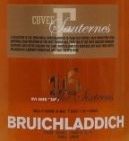
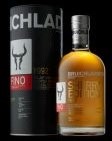
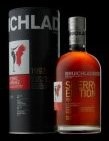
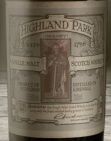
Bruichladdich 16y "First Growth, E, Chateau Y'Quem Sauternes";
The first hint of sophistication here is the wonderful nose with
wood, redcurrant, wine and just the faintest hint of rubber
which soon expands to a sprinkling of aniseed. The palate is
very smooth but with also a slight peppery tingle whilst
offering redcurrant, blackberry and creamy toffee which all
extend into a long finish.
Bruichladdich 1992, 17y Sherry Edition "Fino"; This one is
much lighter in colour but the nose has one great surprise;
strawberries, my favourite summer fruit. It begins with wood,
new leather and spirit, but suddenly and very faintly comes the
slight aroma of freshly-picked strawberries. Then it disappears
for a few seconds, only to return equally faintly once again.
The palate is warming with butterscotch and creamy toffee and
the finish is once again long and smooth with almost a slight
hint of fruit.
Bruichladdich 1992, 17y Sherry Edition "Pedro Ximenex"; Dark
and rich in colour and with a nose of freshly polished aged oak
and raisins marinated in sherry and cognac this is no shy
teenager. The palate is again smooth and warming with marzipan,
walnut, sherry, oak and a hint of fruit. A medium to long finish
exhibits almond, walnut, red wine and cognac.
Highland Park, Earl Magnus 15y; This is the youngest of my
teenage quartet and also by far the strongest at 52.6% abv. It's
also somewhat of a renegade as it shuns the typical Highland
Park characteristics of the open Scottish countryside with
heather, bracken and light smoke in favour of a walk along high
Scottish cliffs overlooking the Atlantic Ocean. There are also
traces of ginger, honey, faint lemon and a touch of earthiness.
This also needs water and plenty of it as it opens into a
fresher, more complex dram and even offers a hint of fruity dry
white wine right at the end of the finish.
So, can
teenagers claim an element of sophistication or do they just
drive me mad? On the evidence of this quartet I have to say
that they certainly make an excellent case for themselves. The
15y Earl may be something of an upstart in rejecting his family
traits, but to the point where this is an excellent whisky
bringing more depth and variety to the family portfolio.
I make
no apology when I say that I am a fan of good sherry cask
whiskies and these two 17y Bruichladdich Siblings are indeed
good examples, especially with that little strawberry surprise
from Brother Fino, but for me the star of the evening was
the 16y sextuplet known as "E" who attended the renowned
finishing school of Chateau Y'Quem where he was infused with a
sophistication, pedigree and character of a true Nobleman.
|
|
|
 |
|
Friday July 2nd
The influence of wood, or "The finished
article?"
As I
explore three more drams today I'm looking at what a few more
years in the cask can offer to this selection of whisky which
inlcudes The Glenlivet 15y French Oak Reserve, Edradour 11y 'Straight
From The Cask' Bordeaux finish and an SMWS 11y bottling of
Glencadam. |
|
| |

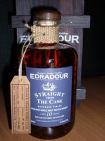
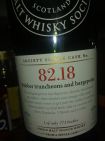
The
Glenlivet 15y French Oak Reserve; My experiences of The
Glenlivet so far have always been positive with smooth, fruity
and very pleasant whiskies. With this 15y "French Oak" The
Glenlivet want to stress that the maturation was in Limousin oak
casks and in that respect, the whisky is a little different from
the rest of the range. It's a little sweeter, slightly richer in
colour and although the summer fruits and berries are still
there, they are pushed a little further into the background as
the sweet wood, nuts & marzipan come to the foreground and then
allow a hint of red wine to dominate the finish. I do tend to
like The Glenlivet whiskies and although this isn't a 'great',
it is a fine example which I can imagine being enjoyed on summer
evenings or perhaps after a BBQ in the garden.
Edradour SFTC 11y Bordeaux finish; Some years ago Edradour
released, or began, a series of cask strength whiskies in half
litre (50cl) bottles and encased in wee crates as packaging. The
labels and crates are colour coded for each different 'finish'
and the one I have here today is the Bordeaux finish and 11
years in age. Like my previous Edradour (10y) this offers some
hints of leafiness and rubber, but at a cask strength of 57.5%
abv it's also pretty powerful and needs water. In fact it really
benefits from plenty of water as it gradually opens to exhibit
those Bordeaux characteristics.
Glencadam SMWS 82.18; Another 11y whisky but this time in
the form of a Glencadam bottled by the SMWS at 58.5% and one
which really evokes its sherry cask maturation with rich, sweet
dark fruits, aged oak, leather and spicy rubber. This also
benefits from the addition of water. The whisky is indeed a fine
one and probably the best of the evening ahead of The Glenlivet
French Oak and then the Edradour, but for me it is also,
unfortunately, the most negative of the evening when it comes to
packaging.
I
remember those 'good old days' when I was still in the UK and a
member of the SMWS. One really felt like a member of a society
or club, distilleries each had their number and labels gave
useful information like cask number, distillation and bottling
dates. There was an air of quality about the whole membership
and package. Alas no more. The quaint numbering system is still
evident, but the label is now filled with gobbledy-gook about
rubber truncheons, bargepoles, liquorice allsorts, cherry
flapjacks and even includes a highly (un)sophisticated "phwwooahh!", whatever that is supposed to mean?
As I
reflect upon age and maturity this month, perhaps I should try
and forgive what I view as adolescent immaturity, but then
as I have said before; I am something of an old Luddite when it
comes to whisky!
|
|
|
 |
|
Thursday July 1st
We're featuring 'age' this month, or
"Happy Birthday to me!"
As the
month of July holds my Birthday I have decided to feature 'age'
as an ongoing theme throughout this month and, it seems, I'm not
the only one doing so as a few days ago I received a press
release from Chivas Brothers about their 'age statement'
campaign, but more of that in a day or two. |
|
| |
What
better way to start my own age discussion than with some 'young
pretenders' as I begin the month with four rather young
expressions; The English Whisky Company's Chapter 9, Abhainn
Dearg's Spirit of Lewis and then two Bruichladdichs in the form
of their 2003 Organic (5y) and X4+3.

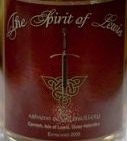
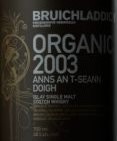
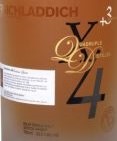
As I
mentioned these are all pretty young, from the Spirit of Lewis
which is just 40 days old to the Bruichladdich 2003 Organic
which is 5 years of age, but are they any good? Let's see .....
English Whisky Company (St. George's distillery) Chapter 9;
This is introduced as a 3y peated whisky, in fact England's
first ever peated whisky and upon pouring I see an extremely
pale colour, with a rather fresh nose of peat, light rubber and
fruit. This is not peat like many of the young peat monsters I
have previously tried, it is much lighter and fresher and also
has a strong element of fruit which I identify as banana skin
and mango. On the palate this translates to an initial burst of
peach followed by warming and gentle peat. All in all I was very
pleasantly surprised with this as it belies its 3y age. It is
gentle, smooth and most certainly offers much promise for the
delights to come with further maturation.
Abhainn Dearg Spirit of Lewis; This is the 40% abv limited
release of 1000 bottles, distilled on 10th February 2010 and
bottled on 22nd March 2010. My first surprise was the extremely
rich colour, but then came the nose and, oh boy, what a nose it
was. Anyone who has experienced long evenings of drinking in a
German beer keller or bar will almost certainly have come across
a wee devil called Obstler which is a German schnapps made from
fruit, primarily pear and apple. This Spirit of Lewis took me
right back there, full in your face, or should I say in your
nose? Obstler. But then behind this came something else, could
it be smoky, fishy .....? When it comes to the palate, all is
revealed as another memory is awoken; that of an evening in
Lisbon whilst staying with a family I know there. Some years ago
when I visited them we spent an evening in an area with lots of
open-air restaurants, many of which were cooking by BBQ and the
fayre of the day seemed to be chicken or smoked fish. That's it,
I'm walking through an air permeated with BBQ and smoked fish,
if only someone else hadn't already coined the term fishky!
Bruichladdich 2003 Organic; This is Islay's first 'Organic'
whisky and at 5y the oldest of my drams here. Again it is
extremely pale in colour and has a nose which initially offers
malt and oat biscuits. After some seconds this expands to
include lightly floral notes and even a hint of what I can only
describe as crispy bacon (slightly smoky, cooked ham). The
palate is again slightly floral, just a little spirity and
leaning towards what I call 'maritime' in character. With a long
finish I was quite impressed with this whisky and certainly hope
that there's more maturing for the years to come.
Bruichladdich X4+3; Did someone say rocket fuel?
Unfortunately I didn't write my tasting notes at the time, but I
remember trying the (Valinch) X4+1 variant of this and "rocket
fuel" was exactly what came to mind. Now, two years down line,
has anything changed? It is 63.5% so the nose obviously
has lots of spirit burn and there's even something in there
which I can only describe as smouldering electric cable. The
palate is surprisingly smooth but still has too much spirit, it
needs water and plenty of it! Eventually, with the addition of
water this exhibits more fruit in the form of peach, apple and
pear.
So,
are they any good? Quite clearly the two stars of this
tasting are the Chapter 9 and the Bruichladdich Organic. They
both exhibit good characteristics which are enjoyable now as
well as offering lots of promise for the future, should stocks
allow them both to be matured further. Well done to St.
George and the 'laddie!
Slàinte Mhath
|
|
|
Month |
Previous major
features |
   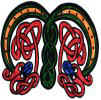     
© Copyright
2009-2011 by Keith Wood - All rights reserved - Whisky-Emporium |
 |
